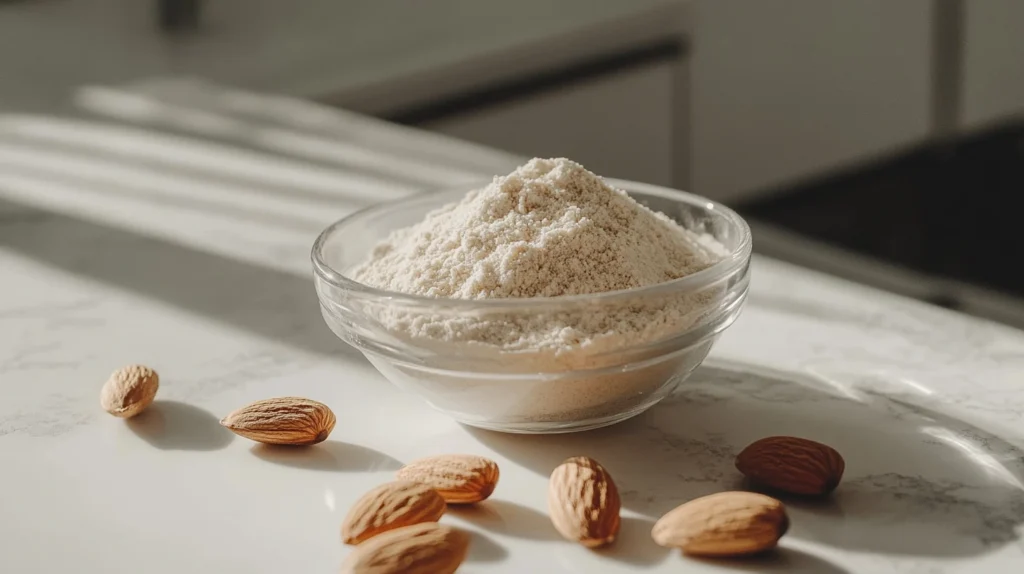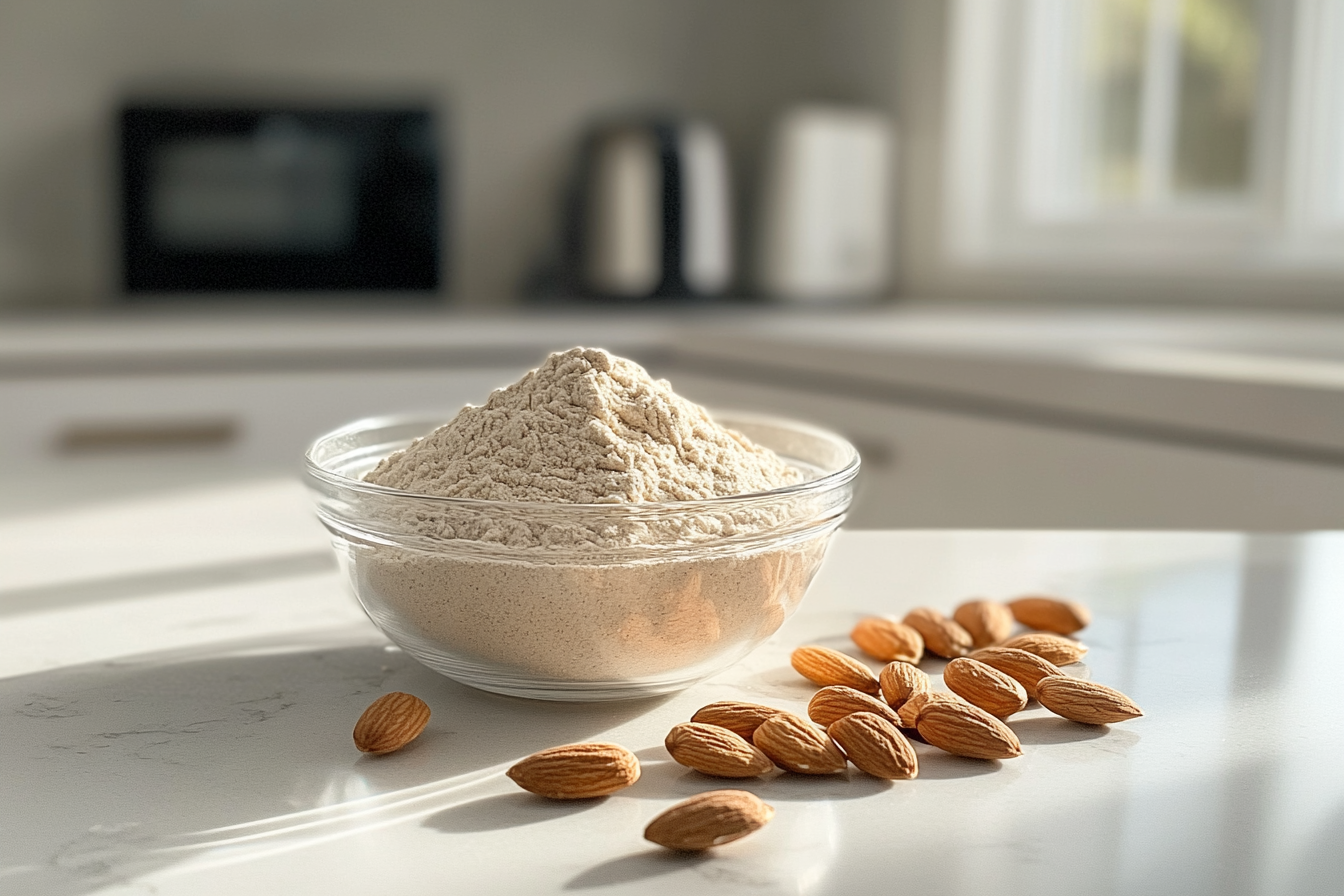Muffin lovers rejoice! If you’ve ever found yourself staring at a bag of almond flour and wondering whether you could use it instead of all-purpose flour in your favorite muffin recipe, you’re not alone. With the growing popularity of gluten-free and low-carb diets, almond flour substitution has become a hot topic in the baking world. In this article, we’ll delve into the science, benefits, and practical tips to help you master this swap, ensuring your muffins turn out just as delicious as ever!
Understanding the Basics
What Is Almond Flour?
Almond flour is a finely ground flour made from blanched almonds with their skins removed. It’s naturally gluten-free and packed with nutrients like vitamin E, magnesium, and heart-healthy fats. Unlike its coarse cousin, almond meal, almond flour is finer and lighter, making it ideal for baking soft and moist treats. Its nutritional profile—low carbs, high protein, and good fats—makes it a favorite among those following keto or gluten-free diets.
How does it differ from other flours? For starters, it lacks gluten, the protein that gives structure and elasticity to baked goods. As a result, recipes with almond flour often need extra binding agents, like eggs or xanthan gum, to hold them together.
What Is All-Purpose Flour?
All-purpose flour, on the other hand, is a wheat-based flour designed to be versatile for almost any type of baking. It contains gluten, a key ingredient that provides structure and chewiness in baked goods. It’s a go-to choice for cakes, breads, and, of course, muffins.
Nutritionally, all-purpose flour is higher in carbs and lower in protein compared to almond flour. For those looking to reduce carbs or avoid gluten, almond flour is a game-changer.
Key Differences Between Almond Flour and All-Purpose Flour
While both flours can be used to make muffins, they behave very differently in recipes. Here’s a quick comparison:
| Characteristic | Almond Flour | All-Purpose Flour |
|---|---|---|
| Gluten Content | None | High |
| Texture | Fine and powdery | Smooth but more absorbent |
| Moisture Retention | High (requires less liquid) | Moderate |
| Nutritional Value | Low carb, high protein and fiber | Higher carb, lower protein |
Practical Tips for Substitution
How to Replace All-Purpose Flour with Almond Flour in Muffins
Swapping all-purpose flour with almond flour can feel like a leap of faith, but it’s doable with the right adjustments. Unlike all-purpose flour, almond flour is denser and retains more moisture, which means muffins baked with it might turn out heavier or wetter without some tweaks.
Here are the key steps to ensure success:
- Adjust the Ratio:
Almond flour can’t simply replace all-purpose flour cup-for-cup. A general rule is to use about 75% of the amount of all-purpose flour called for in the recipe. For example, if your recipe calls for 1 cup of all-purpose flour, start with 3/4 cup of almond flour. - Add Binding Agents:
Because almond flour lacks gluten, you’ll need a binder to provide structure. Eggs work exceptionally well, but if you’re going egg-free, consider flaxseed meal mixed with water or xanthan gum. - Reduce Liquids:
Almond flour absorbs liquids differently than all-purpose flour, often requiring less. Slightly decrease the liquid ingredients in your recipe, such as milk or oil, to balance the batter’s consistency. - Bake Low and Slow:
Almond flour muffins tend to brown quickly due to their natural oils. To avoid burnt tops, lower your oven temperature by 25°F and increase baking time slightly. - Experiment with Leavening Agents:
Muffins made with almond flour may need a touch more leavening (baking powder or soda) to help them rise. Adding an extra 1/4 teaspoon can make a noticeable difference.
Pros and Cons of Using Almond Flour in Muffins
Before you dive into substitution, weigh the pros and cons to see if almond flour aligns with your goals.
Pros:
- Flavor Boost: Almond flour adds a mild, nutty taste that enhances sweet and savory muffins alike.
- Nutritional Perks: It’s a low-carb, high-fiber option that supports keto, paleo, and gluten-free diets.
- Moisture-Rich Texture: Muffins made with almond flour are often tender and rich.
Cons:
- Costly: Almond flour is pricier than all-purpose flour, which might be a dealbreaker for large-batch baking.
- Dense Results: Without adjustments, muffins might feel heavier and less airy.
- Shorter Shelf Life: Its natural oils make almond flour muffins more prone to spoilage.
Baking Techniques for Almond Flour Muffins

Perfecting muffins with almond flour requires a few strategic baking tweaks:
- Don’t Skip Preheating
Always preheat your oven to ensure consistent heat from start to finish. - Grease Your Pans Generously
Muffins baked with almond flour tend to stick, so use non-stick pans and add a thin layer of butter or oil. - Add Flavorful Mix-ins
Almond flour pairs beautifully with fruits, nuts, or chocolate chips. These additions can add texture and sweetness, masking any overly dense results.
By incorporating these tips, you’ll avoid the most common pitfalls and ensure your muffins turn out light, flavorful, and perfectly baked.
Recipe Adjustments and Alternatives
Recipe Adjustments When Using Almond Flour
If you’re determined to use almond flour in your muffin recipe, a few thoughtful adjustments can make all the difference. Let’s break it down step-by-step to help your muffins rise to the occasion:
- Tweak the Wet-to-Dry Ratio
Almond flour’s higher moisture retention means you’ll need to scale back on liquids like milk, water, or oil. Start by reducing these liquids by about 10-20% and adjust further as needed. The batter should be thick but pourable. - Incorporate Extra Binding Agents
Gluten in all-purpose flour acts as a “glue” in traditional baking, holding everything together. Without it, almond flour muffins can crumble. Adding an extra egg or a tablespoon of flaxseed meal mixed with water (as a vegan option) will help bind the ingredients. - Leavening Power
Muffins rely on leavening agents like baking powder or soda to rise. Since almond flour is denser, add 1/4 to 1/2 teaspoon extra to encourage lift and fluffiness. - Use Small Batch Sizes
Almond flour muffins bake more evenly in smaller portions. Opt for mini muffin tins or avoid overfilling standard muffin cups. This prevents soggy centers and ensures even cooking. - Chill the Batter
Allowing the batter to rest in the refrigerator for 20-30 minutes before baking helps thicken the consistency and prevents spreading during baking.
Alternatives to Almond Flour for Gluten-Free Baking
If almond flour doesn’t quite fit your needs or you’re experimenting with other options, there are plenty of great alternatives. Here’s a quick guide to some popular substitutes:
| Flour | Key Features | Best Uses |
|---|---|---|
| Coconut Flour | Absorbs a lot of liquid, slightly sweet flavor | Ideal for dense muffins and cakes |
| Oat Flour | High in fiber, mild flavor | Works well in combination with other flours |
| Cassava Flour | Neutral flavor, gluten-free, and nut-free | Mimics the texture of all-purpose flour |
| Chickpea Flour | High in protein, earthy flavor | Great for savory muffins or dense treats |
Tips for Combining Flours:
When using alternatives, blending two or more flours often yields the best results. For example, combining almond flour with coconut flour can balance the texture and moisture levels. As a rule of thumb, for every cup of almond flour, substitute 1/4 cup of coconut flour and adjust the liquids accordingly.
Troubleshooting and FAQs
Common Challenges When Baking with Almond Flour
Using almond flour in place of all-purpose flour can lead to some unexpected outcomes, especially if you’re new to gluten-free baking. Don’t worry—most issues have simple fixes. Let’s tackle the most common challenges:
- Dense or Heavy Muffins
Almond flour’s natural density often results in muffins that feel heavy. To combat this, increase the leavening agent slightly, incorporate whipped egg whites, or fold in light ingredients like grated zucchini or shredded carrots. - Sinking Muffins
If your muffins sink in the middle, it’s likely due to too much liquid or insufficient binding. Reduce the wet ingredients and double-check your measurements for consistency. Resting the batter before baking can also help stabilize it. - Overly Moist or Soggy Texture
Almond flour retains moisture, so muffins may feel too wet. Lowering the baking temperature and extending the baking time by a few minutes can allow excess moisture to evaporate. Always test doneness with a toothpick—it should come out clean or with just a few crumbs. - Muffins Sticking to the Pan
Almond flour muffins are more prone to sticking. Use parchment liners or generously grease the pan with oil or butter. Silicone muffin molds can also be a game-changer.
Frequently Asked Questions
Can almond flour be used for all baked goods?
While almond flour works wonderfully in muffins, cookies, and cakes, it’s not ideal for recipes requiring strong structure, like yeast bread. Its lack of gluten makes it unsuitable for items needing elasticity.
What are the calorie differences between almond and all-purpose flour muffins?
Muffins made with almond flour are often lower in carbs but higher in fats and calories due to the almond content. For instance, a typical almond flour muffin may contain 200-250 calories compared to 150-200 calories for its all-purpose flour counterpart.
Does almond flour taste different?
Yes, it does! Almond flour has a subtle, nutty flavor that can enhance the taste of muffins. If you prefer a neutral flavor, combine almond flour with other gluten-free flours like oat or cassava flour.
How do I store almond flour?
Almond flour should be stored in an airtight container in a cool, dry place. For longer shelf life, refrigerate or freeze it, as the natural oils in almonds can turn rancid over time.
Can I combine almond flour with other flours?
Absolutely! Blending almond flour with coconut, oat, or cassava flour creates a balanced texture and improves the structure of your baked goods. Each flour brings unique qualities to the mix.
Why don’t my almond flour muffins rise as much as expected?
Without gluten, muffins made with almond flour won’t rise as high. Using more leavening agents and ensuring proper aeration by sifting the flour can help create a lighter texture.
Final Thoughts on Substituting Almond Flour for All-Purpose Flour in Muffin Recipes
Swapping almond flour for all-purpose flour in muffin recipes is an exciting way to explore healthier, gluten-free, or low-carb baking. However, it’s not a direct replacement, and understanding the differences between these flours is key to achieving great results.
Here’s what we’ve learned:
- Almond flour brings a unique nutty flavor and nutrient boost but requires tweaks in liquid ratios, leavening agents, and binding ingredients to mimic the properties of all-purpose flour.
- Baking with almond flour often results in moist, tender muffins, perfect for pairing with mix-ins like fruit, nuts, or chocolate.
- While almond flour is versatile, it’s best used in recipes where a dense and moist texture is desirable, and experimenting with combinations of other gluten-free flours can yield even better results.
Encouragement to Experiment
Baking is as much art as science, and substituting almond flour opens the door to creative experimentation. Start small—try modifying one recipe at a time and take notes on what works best. Adjust for texture, flavor, and baking times to craft muffins that suit your taste and dietary preferences.
With a little patience and practice, you’ll master the art of almond flour baking, and who knows? It might just become your go-to choice for all your muffin recipes.


3 thoughts on “Can I Substitute Almond Flour for All-Purpose Flour in Muffin Recipes?”